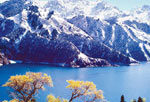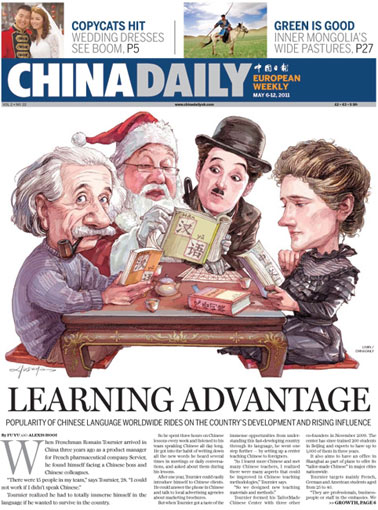Travel
Grass is greener
Updated: 2011-05-06 10:52
By Yan Yiqi (China Daily European Weekly)
3. Genghis Khan's Mausoleum
Among all the significant rulers in Chinese history, Genghis Khan was one of the greatest. He was the founder of Mongol Empire and the sequential Yuan Dynasty (1271-1368), and by the end of his life, the Mongol Empire occupied a substantial portion of Central Asia and China.
The present Genghis Khan's Mausoleum was built in 1954 in Erdos city, about 185 km from Baotou, the largest city of Inner Mongolia.
Most people believe that this mausoleum is not where he was actually buried but is rather a gathering place for Mongolian people to worship the spirit of the mighty Genghis Khan. The great ruler's real burial place still remains a mystery.
The mausoleum consists of three grand halls, which are shaped like Mongolian yurts.
Today, visitors can try delicious Mongolian barbecue, and enjoy a Mongolian-style dance and horse performance in the mausoleum.
4. Hobq Desert
The desert is the sixth largest in China, and is the closest one to Beijing. With the Yellow River as its boundary in three directions, the desert offers one of the most beautiful landscapes in China.
Moving dunes account for 61 percent of this desert, and the entire area is 400 km long and 50 km wide. Close to the Yellow River, the north and west part of this desert enjoys good quality of groundwater, which enables plants to grow.
Interestingly, the desert sand makes unique sounds whenever contact is made. When people walk into the desert, the sounds of the sands are just like someone singing and locals call the desert "the singing sands".
5. Naadam Festival
The festival is a representative of Mongolian culture. "Naadam" means game and fun in Mongolian language. The five-day festival is an event for Mongolian people to gather and play traditional Mongolian sports and games and is held on the fourth day of the sixth month in China's lunar calendar, which usually falls in August.
With its origins in the 13th century, the festival has been the largest event for Mongolian people for more than 700 years. Mongolian wrestling, horse racing and archery are the three main games in this festival. Today, the festival serves more as a platform for the Mongolians to showcase their horse-riding culture, brevity and passion to the rest of the world.
E-paper

Head on
Chinese household care goods producers eye big cities, once stronghold of multinational players
Carving out a spot
Back onto center stage
The Chinese recipe
Specials

Bin Laden dead
The world's most wanted man was killed in a US raid in Pakistan.

British Royal Wedding
Full coverage of the royal wedding of Prince William and Kate Middleton in London. Best wishes

The final frontier
Xinjiang is a mysterious land of extremes that never falls to fascinate.
